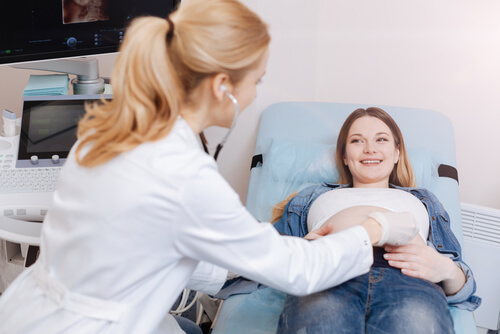How to Know if You're Ovulating

How can you know if you’re ovulating? Each woman will choose the system that best suits her personal needs, according to her schedule, lifestyle and even budget.
Knowing your ovulation cycle helps you to not only get pregnant, but also avoid getting pregnant. There are several methods for calculating your fertile days.
What is ovulation?
Ovulation is the process that occurs when a mature ovum is released by the ovary. Afterward, that ovule goes into the fallopian tubes, where it can be fertilized. This detachment of the ovum is natural and occurs thanks to the functioning of the hormones during each menstrual cycle.
During ovulation, pregnancy is only possible if the ovum comes into contact with a sperm that fertilizes it.
How to know if you’re ovulating
There are different ways to know when a woman is ovulating. Some require medical assistance at health centers that perform tests, while others may be performed at home.
Here we’ll present a few examples of each of them.
Body temperature
During the ovulation process, the body produces a hormone called progesterone. This hormone has an influence on the brain, especially in the center that controls body temperature.
During ovulation, the body temperature can increase between 0.5 and 1 degree Celsius.
To take your body temperature you need:
- A thermometer. Use the same thermometer during the period of time that this method is being implemented.
- Paper and pencil to record the temperature.
The woman should take her temperature every day upon waking, before getting out of bed. Any movement can increase body temperature, so it’s advisable to take your temperature before performing any activity. Then you must write it down.

This method to know whether you’re ovulating requires discipline in order to be effective. It’s not advisable to skip temperature readings. You’ll get an average. When there is an increase in body temperature, this will be the period of time in which you’re ovulating.
If a couple is looking to get pregnant, it’s ideal to start having sex two days before the temperature increase. The reason is to make sure the body has produced the ideal levels of progesterone for fertilization.
Advantages: it’s low cost and can be done at home.
Disadvantages: taking your temperature daily can become tedious, and sometimes the records may fail.
Ovulation test
An ovulation test can be purchased at the pharmacy. They’re similar to home pregnancy tests. They work by detecting luteinizing hormone (LH) in your urine. If the test is positive, then the woman is ovulating. These tests can predict ovulation up to about 36 hours before the fertile day.
It’s recommended to follow the instructions that come with the test. In order to avoid false positives on urine tests, the test should be taken on the second day of ovulation, because LH becomes concentrated at night.
Advantages: the tests are very easy to do. They’re safer than taking your temperature.
Disadvantages: there are no arguments against ovulation tests. If they don’t test positive throughout the month, a more comprehensive measurement of other hormones, such as estradiol, prolactin, thyroid hormones and male hormones is necessary.
Billings method or cervical mucus observation
Another method to know whether you’re ovulating is to observe your cervical mucus. During ovulation, vaginal discharge increases considerably. This happens because it becomes a vehicle for sperm to reach the fallopian tubes.
In addition to this increase, changes in its characteristics can also be observed. The discharge becomes more flexible and transparent, similar to raw egg white.
Advantages: it’s simple and the woman can do it at home without any extra tools.
Disadvantages: this observation could fail if the woman doesn’t notice the changes.
Tests performed by gynecologists
Ultrasound
A transvaginal ultrasound is performed in a gynecologist’s office. It’s used to evaluate the growth of the follicle that is going to ovulate during that cycle.

Advantages: it’s a reliable and scientific procedure.
Disadvantages: it’s costly and warrants a visit to a professional
Biopsy
A fragment of the tissue that covers the endometrium is removed in order to analyze the hormones within that tissue.
Advantages: the method gives accurate results.
Disadvantages: it can be painful and annoying for the woman.
This text is provided for informational purposes only and does not replace consultation with a professional. If in doubt, consult your specialist.








